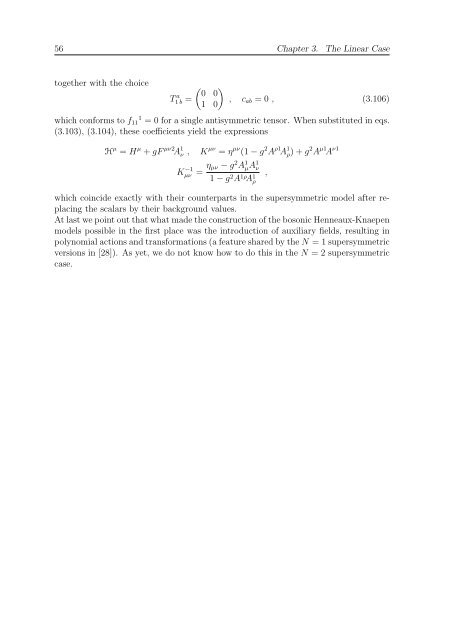N=2 Supersymmetric Gauge Theories with Nonpolynomial Interactions
N=2 Supersymmetric Gauge Theories with Nonpolynomial Interactions
N=2 Supersymmetric Gauge Theories with Nonpolynomial Interactions
You also want an ePaper? Increase the reach of your titles
YUMPU automatically turns print PDFs into web optimized ePapers that Google loves.
56 Chapter 3. The Linear Case<br />
together <strong>with</strong> the choice<br />
T a 1 b =<br />
<br />
0 0<br />
1 0<br />
, cab = 0 , (3.106)<br />
which conforms to f11 1 = 0 for a single antisymmetric tensor. When substituted in eqs.<br />
(3.103), (3.104), these coefficients yield the expressions<br />
H µ = H µ + gF µν2 A 1 ν , K µν = η µν (1 − g 2 A ρ1 A 1 ρ) + g 2 A µ1 A ν1<br />
K −1<br />
µν = ηµν − g 2 A 1 µA 1 ν<br />
1 − g 2 A 1ρ A 1 ρ<br />
which coincide exactly <strong>with</strong> their counterparts in the supersymmetric model after replacing<br />
the scalars by their background values.<br />
At last we point out that what made the construction of the bosonic Henneaux-Knaepen<br />
models possible in the first place was the introduction of auxiliary fields, resulting in<br />
polynomial actions and transformations (a feature shared by the N = 1 supersymmetric<br />
versions in [28]). As yet, we do not know how to do this in the N = 2 supersymmetric<br />
case.<br />
,

















